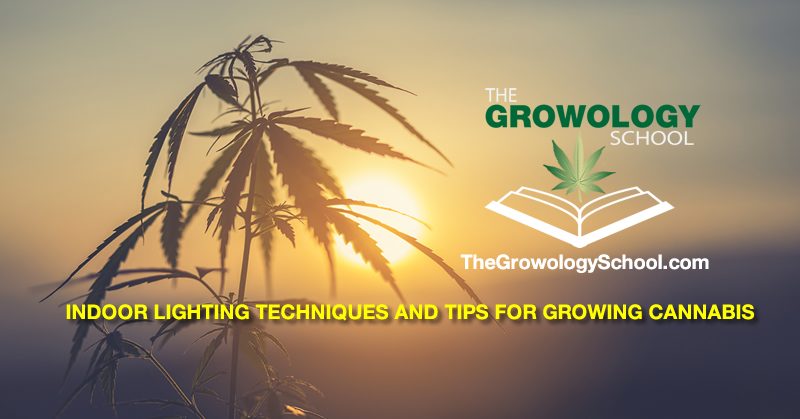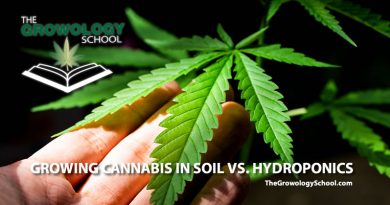Indoor Lighting For Cannabis Growth
INDOOR LIGHTING TECHNIQUES AND TIPS FOR GROWING CANNABIS
Lighting is inarguably a vital and essential factor in the growth of your cannabis plants. The more lighting that your plants get, the more growth they will experience and the more they will yield. Light itself can be called another type of food for your plants and knowing this helps you make sure you provide adequate light for your plants’ growth.
For young plants, you do not have to blast your plants with 2000W/m2 of light or getting a large LED light that you cannot control its ambient temperatures. The type of light you will use on your cannabis plantation is determined by the height of your plants and the spatial arrangement.
INDOOR LIGHTING FOR CANNABIS CULTIVATION
Cannabis became illegal almost as soon as it was discovered, but that did not stop people from growing the plant. Since it was impossible to grow out in the open, someone was brilliant enough to bring in a street lamp to replace the light the sun was providing outside. This did work, and this is the source of the vibrant, massive cannabis industry that we have today. This lighting technology is known as high-intensity discharge (HID). There are two variants of these lights – Metal Halide and Sodium. These lights are strong and very hot, but if you can manage the heat effectively, they get the job done and help your cannabis grow as they should.
Because of space limitations, some growers started trying out lights that had lower power and did not consume too much energy such as compact fluorescent lights (CFL) which were a lot more convenient to use, affordable and small. These were found to be ideal for clones and seedlings, but they could not produce enough light spectrum for flowering.
Over the years up till more recently, technology has brought artificial agro-specific lighting through LED fixtures which are also efficient and capable of producing adequate photosynthetic active radiation. The PAR is the measure of the light spectrum intensity and quality that plant use in place of natural sunlight for photosynthesis. This, however, does not mean LED fixtures are better than CFL or HID; LED only fits in well and solves a seemingly existing problem. Worthy of mention is plasma fixtures which work under similar principles to HIDs except that they have better light spectrum than both metal halide and sodium bulbs.
WHEN SHOULD YOU TURN ON AND TURN OFF YOUR LIGHTS?
Many people do not pay attention to the light schedule, and it usually takes many growers a long time to realize that they can influence the behavior and growth patterns of their cannabis plants using some light schedule tricks.
A typical light schedule during the vegetative period will be to leave the light on for around 18 hours and turn it off for 6 hours while for flowering, you can make it 12 hours on and 12 hours off. Do you also know that there is more you can do with creating a light schedule? You can save on electricity costs by using a gas lantern to provide light during the vegetative period without compromising on performance. Before switching to flowering, you may want to turn off the light for 24 hours to induce quick sexing in some strains of cannabis.
During the flowering period, you can decrease the length of time that the power is turned on so that the production speed of the plant can increase. This is known as light deprivation or the diminishing light technique. You can do this by setting your timer to turn off the light ten minutes earlier than when the light is supposed to go off. Keep doing this until it is time for harvesting.
SAVE ON ELECTRICITY
Saving electricity is a normal thing to do, and it is not just to save money but to save the environment as well. Invest in an automatic exhaust system so that you can save on heating. During winter, the speed of exhaust fans will reduce; therefore, conserving heat. By mid-summer, the exhaust fans can work at full speed to put things in control. A lot of inline exhaust fans have heat sensors in them for this purpose. You can save money on this by using a variac transformer which helps slow your fans down and make them more long-lasting.
If you have propane heaters and butane heaters keeping your house warm, you will be able to conserve heat by slowing your fans down while also increasing the CO2 levels which help raise the temperature of the grow room.
If you are using LEDs, you can reduce the lights close to the canopy without burning your plants’ buds or leaves. The amount of nutrients and water that you will be using will decrease considerably, and your plants will flourish even better.
CONCLUSION
Boosting your cannabis plant production can be done in dozens of ways, and you get to save on costs of production in the process as well. Experienced growers usually prefer one method over other methods or one type of light. In the same vein, even large commercial growers have different approaches to growing cannabis and the kind of lighting techniques they adopt.
The debate about differences in plant genetics, growing mediums, and different growers never ends, and this can be named as a key factor that ensures maximum productivity of quality plants amongst cannabis growers.
Never forget that what works for you may fail for another person. Experiment gradually and do not rush a particular method. Try it out first and observe results. This way, you will know what does not work and what works. Taking notes and pictures are also essential so that you can effectively monitor your progress.
As you introduce better practices and get acquainted with your beloved cannabis garden, you will undoubtedly reap bountiful yields to pay off for the efforts and work you put into it. Just remember to never diminish the importance of light for your cannabis plantation.




